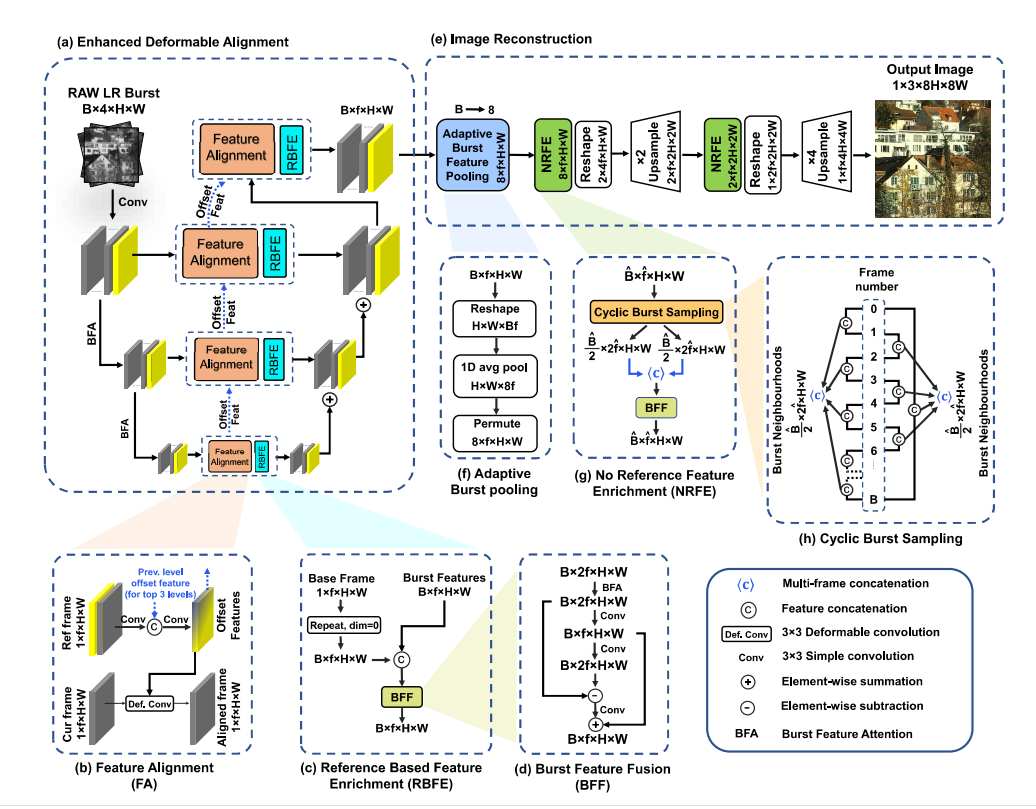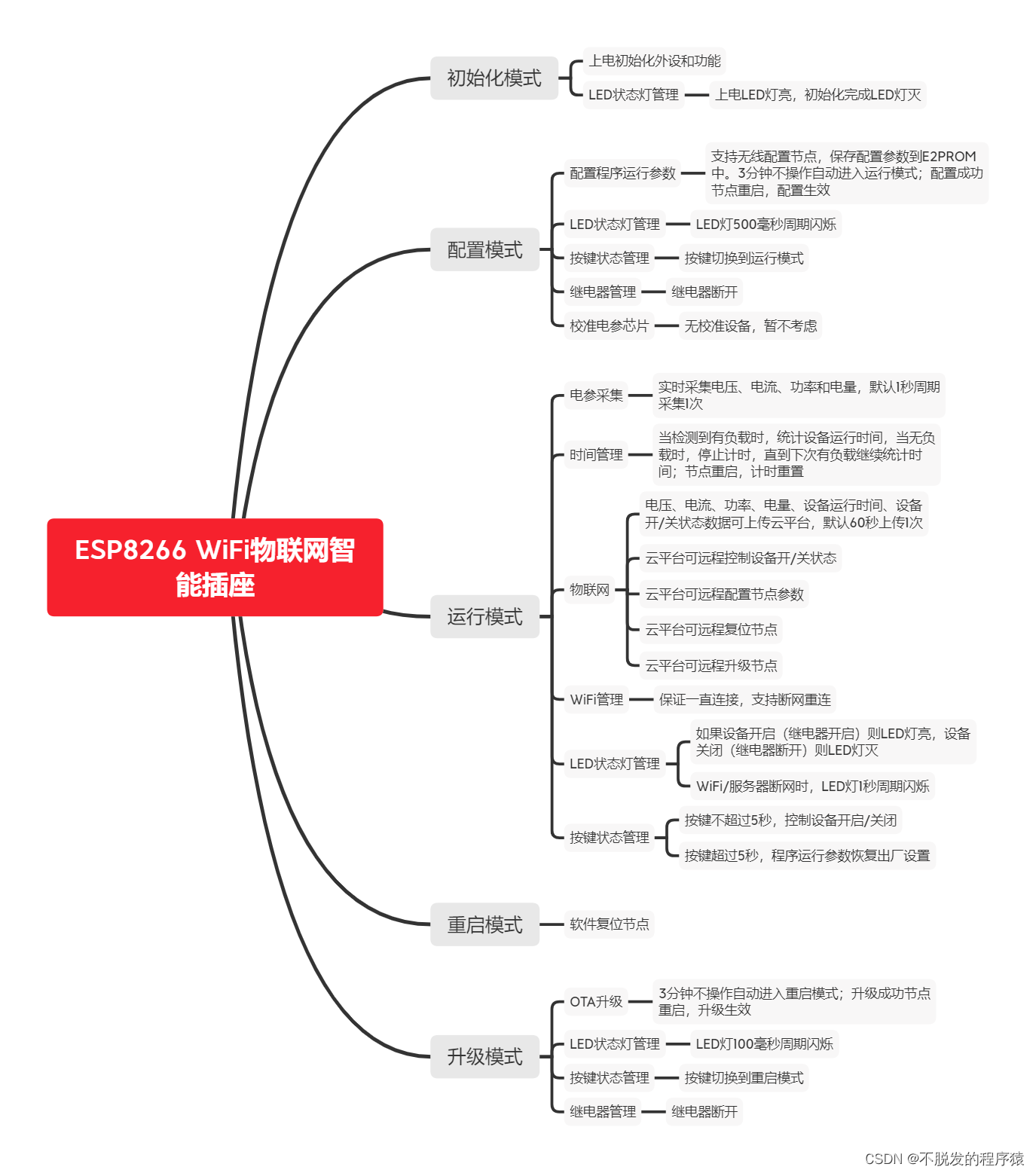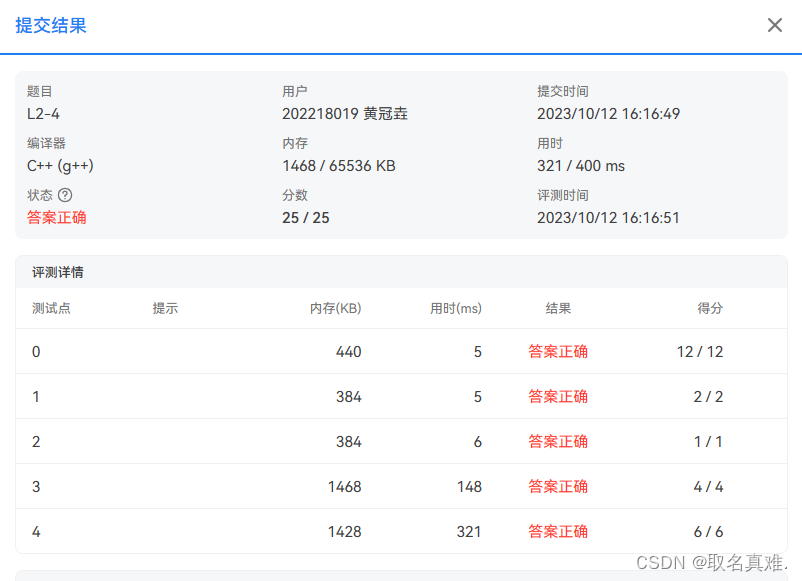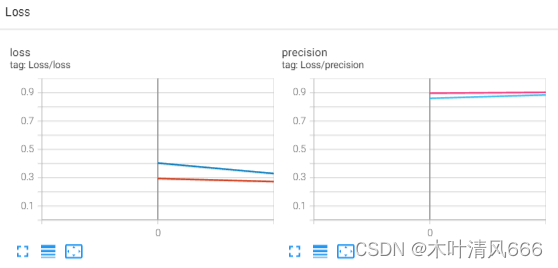前一篇:Linux内存管理 (1):内核镜像映射临时页表的建立
文章目录
- 1. 前言
- 2. 分析背景
- 3. memblock 简介
- 3.1 memblock 数据结构
- 3.2 memblock 接口
- 4. memblock 的构建过程
1. 前言
限于作者能力水平,本文可能存在谬误,因此而给读者带来的损失,作者不做任何承诺。
2. 分析背景
本文基于 ARMv7 架构,Linux 4.14 内核进行分析。
3. memblock 简介
memblock 是内核在启动初期用来管理系统中内存的子系统,经由配置项 CONFIG_HAVE_MEMBLOCK 开启,用于替代更早期内核版本中的 bootmem 。bootmem 经由配置项 CONFIG_NO_BOOTMEM 关闭。在启用了 memblock 的情形下,bootmem 会被禁用,为保持了对 bootmem 接口的兼容,引入 mm/nobootmem.c 模块,将 bootmem 的 __alloc_bootmem() 等系列接口封装为对 memblock 接口的调用。
3.1 memblock 数据结构
/* include/linux/memblock.h */#define INIT_MEMBLOCK_REGIONS 128 /* "memory", "reserved" 类型内存区域最大个数 *//* Definition of memblock flags. */
enum {MEMBLOCK_NONE = 0x0, /* No special request */MEMBLOCK_HOTPLUG = 0x1, /* hotpluggable region */MEMBLOCK_MIRROR = 0x2, /* mirrored region */MEMBLOCK_NOMAP = 0x4, /* don't add to kernel direct mapping */
};/* 内存区域 */
struct memblock_region {phys_addr_t base; /* 内存区域起始物理地址 */phys_addr_t size; /* 内存区域大小 */unsigned long flags; /* 内存区域特征标记: HOTPLUG, MIRROR, NOMAP */
#ifdef CONFIG_HAVE_MEMBLOCK_NODE_MAPint nid; /* 内存区域所在的 NUMA 节点 ID */
#endif
};/* @name 类型内存区域列表 */
struct memblock_type {unsigned long cnt; /* number of regions: 当前类型内存区域列表 @regions 的已用长度 */unsigned long max; /* size of the allocated array: 当前类型内存区域列表 @regions 的最大长度 */phys_addr_t total_size; /* size of all regions: 已添加到当前类型内存区域列表 @regions 的所有区域的总大小 */struct memblock_region *regions; /* 当前类型内存区域列表 */char *name; /* 内存区域类型名称: "memory", "reserved" */
};/* memblock 子系统管理数据结构 */
struct memblock {bool bottom_up; /* is bottom up direction? */phys_addr_t current_limit; /* 所管理内存的最大地址 */struct memblock_type memory; /* 各种类型的内存区域 */struct memblock_type reserved; /* 系统保留的内存区域(如 initrd, DTB, 内核 crash dump 等内存区域) */...
};定义 memblock 子系统管理数据:
/* mm/memblock.c *//* "memory" 内存区域列表 */
static struct memblock_region memblock_memory_init_regions[INIT_MEMBLOCK_REGIONS] __initdata_memblock;
/* "reserved" 内存区域列表 */
static struct memblock_region memblock_reserved_init_regions[INIT_MEMBLOCK_REGIONS] __initdata_memblock;struct memblock memblock __initdata_memblock = {/* "memory" 内存区域 */.memory.regions = memblock_memory_init_regions,.memory.cnt = 1, /* empty dummy entry */.memory.max = INIT_MEMBLOCK_REGIONS,.memory.name = "memory",/* "reserved" 内存区域 */.reserved.regions = memblock_reserved_init_regions,.reserved.cnt = 1, /* empty dummy entry */.reserved.max = INIT_MEMBLOCK_REGIONS,.reserved.name = "reserved",....bottom_up = false, /* 地址增长方向 */.current_limit = MEMBLOCK_ALLOC_ANYWHERE, /* 初始为最大物理地址,后续会修正为 lowmem 的最大地址 */
};3.2 memblock 接口
memblock 子系统提供了一系列 添加移除内存区域、分配释放内存 等功能的接口,下面重点挑选几个典型的接口进行下简单说明。
/* include/linux/memblock.h *//* 添加 内存区域(region) 到 "memory" 内存区列表 */
int memblock_add_node(phys_addr_t base, phys_addr_t size, int nid);
int memblock_add(phys_addr_t base, phys_addr_t size);/* 添加 内存区域(region) 到指定类型 @type 的内存区列表 */
int memblock_add_range(struct memblock_type *type,phys_addr_t base, phys_addr_t size,int nid, unsigned long flags);/* 从 "memory" 内存区列表移除 内存区域(region) */
int memblock_remove(phys_addr_t base, phys_addr_t size);/* 添加 内存区域(region) 到 "reserved" 内存区列表 */
int memblock_reserve(phys_addr_t base, phys_addr_t size);/* * 管理 "memory" 内存区中 可热插拔(hot pluggable) 内存区域(region). * 可能引起 内存区域(region) 的拆分和合并。*/
int memblock_mark_hotplug(phys_addr_t base, phys_addr_t size);
int memblock_clear_hotplug(phys_addr_t base, phys_addr_t size);/* 从 "memory" 内存区列表内存区域分配内存 */
phys_addr_t memblock_alloc_nid(phys_addr_t size, phys_addr_t align, int nid);
phys_addr_t memblock_alloc_try_nid(phys_addr_t size, phys_addr_t align, int nid);
phys_addr_t memblock_alloc(phys_addr_t size, phys_addr_t align);/* * 释放内存区域:* 将内存区域从 "memory" 内存区列表移到 "reserved" 内存区列表,* 这些释放的内存区域将不纳入 伙伴管理系统 进行管理。*/
int memblock_free(phys_addr_t base, phys_addr_t size);
void __memblock_free_early(phys_addr_t base, phys_addr_t size);以上接口都是基于物理地址进行操作,以下是基于虚拟地址进行操作的 memblock 接口:
/* include/linux/bootmem.h */#if defined(CONFIG_HAVE_MEMBLOCK) && defined(CONFIG_NO_BOOTMEM)void *memblock_virt_alloc_try_nid_nopanic(phys_addr_t size,phys_addr_t align, phys_addr_t min_addr,phys_addr_t max_addr, int nid);
void *memblock_virt_alloc_try_nid(phys_addr_t size, phys_addr_t align,phys_addr_t min_addr, phys_addr_t max_addr, int nid);
void __memblock_free_early(phys_addr_t base, phys_addr_t size);
void __memblock_free_late(phys_addr_t base, phys_addr_t size);#else...#endif4. memblock 的构建过程
start_kernel() /* init/main.c */setup_arch() /* arch/arm/kernel/setup.c */mdesc = setup_machine_fdt(__atags_pointer); /* arch/arm/kernel/devtree.c */early_init_dt_scan_nodes(); /* drivers/of/fdt.c *//* 扫描 DTS 配置的内存区域,添加到 memblock */of_scan_flat_dt(early_init_dt_scan_memory, NULL);of_scan_flat_dt() /* drivers/of/fdt.c */for (offset = fdt_next_node(blob, -1, &depth);offset >= 0 && depth >= 0 && !rc; offset = fdt_next_node(blob, offset, &depth)) {pathp = fdt_get_name(blob, offset, NULL);if (*pathp == '/')pathp = kbasename(pathp);rc = it(offset, pathp, depth, data);early_init_dt_scan_memory(offset, pathp, depth, data)}/** DTS 配置的内存区域几种形式: * (1) 用 memory@0 标记 (可以没有 device_type 属性)* /{* memory@0 {* device_type = "memory"; // 可选* reg = <0x00000000 0x40000000>; // 1 GB* };* };* (2) device_type = "memory" 标记* /{* memory {* device_type = "memory";* reg = <0x00000000 0x20000000>;* };* };*/
early_init_dt_scan_memory(offset, pathp, depth, data) /* drivers/of/fdt.c */.../* 节点可以用 linux,usable-memory 属性指定内存区域 */reg = of_get_flat_dt_prop(node, "linux,usable-memory", &l);if (reg == NULL) /* 节点没有 linux,usable-memory 属性 */reg = of_get_flat_dt_prop(node, "reg", &l); /* 节点可以用 reg 属性指定内存区域范围 */if (reg == NULL)return 0;endp = reg + (l / sizeof(__be32));/* 节点 hotpluggable 属性指定内存区域是否是 可热插拔 的 */hotpluggable = of_get_flat_dt_prop(node, "hotpluggable", NULL);/* 提取内存区域信息: base, size[, base, size [...]] */while ((endp - reg) >= (dt_root_addr_cells + dt_root_size_cells)) {u64 base, size;/* * 节点的 linux,usable-memory 或 reg 属性中,每两个数据对定义一个内存区域: * . 第1个数据定义内存区域物理基址* . 第2个数据定义内存区域大小* 即 (base size), 如 0x00000000 0x20000000*/base = dt_mem_next_cell(dt_root_addr_cells, ®); /* 当前内存区域物理基址 */size = dt_mem_next_cell(dt_root_size_cells, ®); /* 当前内存区域大小 */if (size == 0) /* 内存区域大小为 0 */continue;/* 添加 新内存区域 到 memblock */early_init_dt_add_memory_arch(base, size);if (!hotpluggable) /* 非 热插拔内存区域 */continue;/* * 同一内存区域,不能同时包含 非可热插拔 和 可热插拔 内存,* 必须独立管理可热插拔(hot pluggable)内存区域.* 考虑这样一种情形: * memblock 发现当前可热插拔内存区域 和 一块 memblock 里已有* 的非可热插拔内存区域相邻, 于是将它们合并了进行管理; 然后* 在某个时间点, 可热插拔内存区域拔出, 但是内存管理却因为将* 它和相邻非可插拔内存区域合并了,所以没有了可热插拔内存区* 域的区间信息(起始地址和大小), 于是就没法单独只移除可热插* 拔内存区域了。这显然是有问题的: 如果我们选择和可热插拔内* 存区域相邻的非可热插拔内存区域一起移除,浪费了本可以使用* 的空间,极端情形下,如果这个和可热插拔内存区域相邻的非可* 热插拔内存区域是系统中剩下的唯一内存,移除这块内存将变得* 不可能; 但如果不移除可热插拔内存区域,允许继续访问,也会* 出问题。* 基于上述原因, 在系统插入可热插拔内存区域时, 不能将它们和* 其它 memblock 里面已存在的非可热插拔内存区域合并, 必须对* 所有的可热插拔内存区域进行独立管理.*/if (early_init_dt_mark_hotplug_memory_arch(base, size))pr_warn("failed to mark hotplug range 0x%llx - 0x%llx\n",base, base + size);}early_init_dt_add_memory_arch(base, size) /* drivers/of/fdt.c */// 做内存区域对齐、边界检查:// . 不合规的部分或全部丢弃// . 小于 PHYS_OFFSET 内存部分全部丢弃...memblock_add(base, size); /* 添加内存区域到 memblock */在插入新内存区域时,新内存区域和要插入类型的内存区内的已有区域,在位置上可能存在以下6种关系:
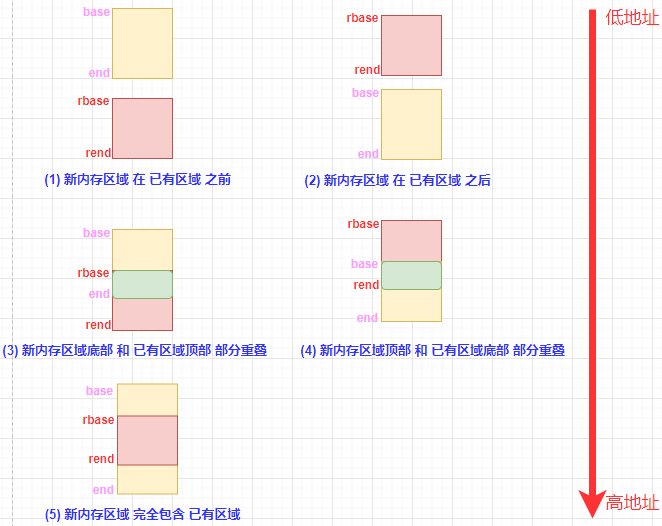
其中,[base, end) 表示新内存区域物理地址范围,[rbase, rend) 表示已有区域的物理地址范围。上图中没有给出 新内存区域 和 已有区域 完全重叠的情形,因为它可以视为情形 (5) 或 (6) 的一种特殊情形。参照上图,我们继续来看新内存区域的插入过程:
memblock_add(base, size); /* mm/memblock.c *//* 添加 新内存区域 [base, base+size-1] 到 "memory" 类型内存区域列表 */return memblock_add_range(&memblock.memory, base, size, MAX_NUMNODES, 0);memblock_add_range(&memblock.memory, base, size, MAX_NUMNODES, 0);bool insert = false;phys_addr_t obase = base; /* 保存 新内存区域 基地址 */phys_addr_t end = base + memblock_cap_size(base, &size); /* 新内存区域 结束地址 + 1 *//** @idx : 要插入的 新内存区域 在 @type 内存区域列表中索引* @nr_new: 要插入的 新内存区域 计数: 可能会对 新内存区域 进行拆分 */int idx, nr_new;struct memblock_region *rgn;if (!size)return 0;/* special case for empty array */if (type->regions[0].size == 0) { /* 第1个添加到 @type 类型内存区间 的 内存块 */WARN_ON(type->cnt != 1 || type->total_size);type->regions[0].base = base;type->regions[0].size = size;type->regions[0].flags = flags;memblock_set_region_node(&type->regions[0], nid);type->total_size = size;return 0;}repeat:/** The following is executed twice. Once with %false @insert and* then with %true. The first counts the number of regions needed* to accommodate the new area. The second actually inserts them.*//* * 下面的代码会被执行两遍: * . 第1遍用来确定需新插入的内存区域数目 (@nr_nw), 不做实际* 内存区域的插入操作 (@insert == false). 在 @type 类型的* 内存区域不够存放要新插入的 @nr_nw 个内存区域时, 扩展 * @type 类型内存区域列表长度.* . 第2遍执行新增的 @nr_nw 个内存区域的插入操作 (@insert == true).*/base = obase;nr_new = 0;for_each_memblock_type(type, rgn) { /* 遍历 @type 类型内存区 当前所有的 内存区间(region) */phys_addr_t rbase = rgn->base;phys_addr_t rend = rbase + rgn->size;/** 新内存区域 在 已有区域 之前 (见前面的图片情形 (1))* 表示已经为 新内存区域 找到合适的插入位置,且整块* 新内存区域 已经处理完毕,则可进入第2编的 新内存区域* 的插入过程。*/if (rbase >= end)break;/** 新内存区域 在 已有区域 之后 (见前面的图片情形 (2))* 继续比较 新内存区域 和后面 已有内存区域 位置, 插入* 新内存区域 后, 要保证内存区域按地址从低到高排列, 这* 是后续的内存区域 插入 和 分配 操作所要求的。*/if (rend <= base)continue;/** @rgn overlaps. If it separates the lower part of new* area, insert that portion.*//* 新内存区域 和 已有内存区域 存在重叠,彼此之间如前面图中 (3) 或 (4) 的关系 */if (rbase > base) { /* 新内存区域底部 和 已有区域顶部 部分重叠 (见前面的图片情形 (3)) */
#ifdef CONFIG_HAVE_MEMBLOCK_NODE_MAPWARN_ON(nid != memblock_get_region_node(rgn));
#endifWARN_ON(flags != rgn->flags);nr_new++; /* 需新插入一个内存区域: [base, rbase - 1] */if (insert) /* 第1编执行不做插入操作(@insert==false), 第2编执行插入操作(@insert==true) */memblock_insert_region(type, idx++, base, rbase - base, nid, flags); /* 插入内存区域 */}/* area below @rend is dealt with, forget about it *//** 新内存区域 和 已有区域 部分重叠:* . 如果是 新内存区域 和 已有区域 位置关系是情形 (3),* 在第1编执行时, 已经在 if (rbase > base) 代码分支中,* 将需插入的 新内存区域 和 @rgn 非重叠部分 纳入到需新* 插入计数内存区域计数 @nr_new 中; 在第2编执行已经在* if (rbase > base) 代码分支中, 对需插入的 新内存区域 * 和 @rgn 非重叠部分 执行了插入操作. 无论是第1编还是第* 2编执行, 新内存区域都已经处理完毕, 这种情形下在这里将* base 和 end 置成相同的位置(base == end).* . 如果 新内存区域 和 已有区域 位置关系是情形 (4), 这里* 让 base 指向 新内存区域 非重叠部分的开始位置, 然后 * [base, end) 覆盖新内存区域 非重叠部分, 继续和下一个* 已有内存区域进行位置比较, 最终找到合适的插入位置并* 进行处理.*/base = min(rend, end);}/* insert the remaining portion *//* 新内存区域 仍有未处理部分, 插入这一部分 */if (base < end) {nr_new++;if (insert)memblock_insert_region(type, idx, base, end - base,nid, flags); /* 插入内存区域 */}/* 没有内存区域需要插入: 新内存区域可能完全包含于已有内存区域 */if (!nr_new)return 0;/** If this was the first round, resize array and repeat for actual* insertions; otherwise, merge and return.*/if (!insert) { /* 第1遍 *//** 如果 @type 类型内存区域列表无法容纳新增的 @nr_new 个 * 内存区域, 动态扩展 @type 类型内存区域列表长度, 直到* 能容纳新增内存区域为止.*/while (type->cnt + nr_new > type->max)if (memblock_double_array(type, obase, size) < 0)return -ENOMEM;/* 进入第2遍的实际插入操作阶段 */ insert = true;goto repeat;} else {memblock_merge_regions(type);return 0;}/* 插入 内存区域 */
static void __init_memblock memblock_insert_region(struct memblock_type *type,int idx, phys_addr_t base,phys_addr_t size,int nid, unsigned long flags)
{struct memblock_region *rgn = &type->regions[idx];BUG_ON(type->cnt >= type->max);/* 将新内存区信息记录在 @idx 位置上,首先需将 @idx 位置开始的所有已有旧区域的信息往后移动一个位置 */memmove(rgn + 1, rgn, (type->cnt - idx) * sizeof(*rgn));rgn->base = base; /* 记录新内存区域物理基址 */rgn->size = size; /* 记录新内存区域容量 */rgn->flags = flags; /* 记录新内存区域特性标记: MEMBLOCK_NONE, MEMBLOCK_HOTPLUG, ... */memblock_set_region_node(rgn, nid); /* 记录新内存区域所属的 NUMA 节点 ID */type->cnt++; /* @type 类型内存区域个数加1 */type->total_size += size; /* 更新 @type 类型所有内存区域总容量 */
}到此,新增内存区域的插入过程已经分析完毕,还剩下的就是对于热插拔内存区域隔离处理:
/* 接前面的分析代码 */
early_init_dt_scan_memory(offset, pathp, depth, data) /* drivers/of/fdt.c */.../* 节点 hotpluggable 属性指定内存区域是否是 可热插拔 的 */hotpluggable = of_get_flat_dt_prop(node, "hotpluggable", NULL);...while ((endp - reg) >= (dt_root_addr_cells + dt_root_size_cells)) {.../* 添加 新内存区域 到 memblock */early_init_dt_add_memory_arch(base, size);if (!hotpluggable) /* 非 热插拔内存区域 */continue;/* 热插拔内存区域处理 */if (early_init_dt_mark_hotplug_memory_arch(base, size))pr_warn("failed to mark hotplug range 0x%llx - 0x%llx\n",base, base + size);}early_init_dt_mark_hotplug_memory_arch(base, size) /* drivers/of/fdt.c */return memblock_mark_hotplug(base, size);memblock_mark_hotplug(base, size); /* mm/memblock.c */return memblock_setclr_flag(base, size, 1, MEMBLOCK_HOTPLUG);static int __init_memblock memblock_setclr_flag(phys_addr_t base,phys_addr_t size, int set, int flag)
{struct memblock_type *type = &memblock.memory;int i, ret, start_rgn, end_rgn;/* * 分离区间 [base,base+size) 和 已有内存区域重叠部分, * 从 start_rgn,end_rgn 分别返回 第1个 和 最后1个(+1) 包含* 区间 [base,base+size) 的 内存区域索引。*/ret = memblock_isolate_range(type, base, size, &start_rgn, &end_rgn);if (ret)return ret;/* 设置内存区间 [base,base+size) 所有内存区域 的 flags (MEMBLOCK_HOTPLUG) */for (i = start_rgn; i < end_rgn; i++)if (set) /* 本文的场景 */memblock_set_region_flags(&type->regions[i], flag);elsememblock_clear_region_flags(&type->regions[i], flag);/** 可能因对内存区域 flags 的设置/清除 操作, * 导致原本相邻、具有不同 flags 标记相邻内存区域, * 现在具有具有了一样的 flags, 这时候需要合并。*/memblock_merge_regions(type);return 0;
}函数 memblock_isolate_range() 找到 指定内存区间 和 memblock 中已有内存区域重叠相交部分,将重叠相交部分从 memblock 中原有的内存区域分离出来,成为一个新的内存区域,添加插入 memblock 。 memblock_isolate_range() 的功能,举一个具体的例子就很容易理解了,假定已经有 [0,3], [4,8], [9,10] 这3个内存区域,现在想将 [2,6] 内存区间分离出来,经过 memblock_isolate_range() 处理后,区间被重新分割成 [0,2], [2,3], [4,6], [6,8], [9,10] 这5个内存区域,同时 start_rgn 返回 1,end_rgn 返回 3(内存区域索引从 0 开始)。来看 memblock_isolate_range() 实现细节:
/* mm/memblock.c */
static int __init_memblock memblock_isolate_range(struct memblock_type *type,phys_addr_t base, phys_addr_t size,int *start_rgn, int *end_rgn)
{phys_addr_t end = base + memblock_cap_size(base, &size);int idx;struct memblock_region *rgn;*start_rgn = *end_rgn = 0;if (!size)return 0;/* we'll create at most two more regions */while (type->cnt + 2 > type->max)if (memblock_double_array(type, base, size) < 0)return -ENOMEM;for_each_memblock_type(type, rgn) {phys_addr_t rbase = rgn->base;phys_addr_t rend = rbase + rgn->size;/** 指定区间 在 已有区域 @rgn 之前 (见前面的图片情形 (1))* 指定区间处理完毕: 不可能再和其它内存区域相交。*/if (rbase >= end)break;/* * 指定区间 在 已有区域 @rgn 之后 (见前面的图片情形 (2)) * 继续处理更高地址内存区域。*/if (rend <= base)continue;if (rbase < base) { /* 指定区间顶部 和 已有区域 @rgn 底部 部分重叠 (见前面的图片情形 (4)) *//** @rgn intersects from below. Split and continue* to process the next region - the new top half.*//** 将区域 @rgn 一分为二:* . 非重叠、高地址 部分 [base, rend)* . 重叠 低地址 部分 [rbase, base)* 分别记录为两个不同的区域。*/ /* 区域 @rgn 缩减为只记录 非重叠、高地址部分 [base, rend) */rgn->base = base;rgn->size -= base - rbase;type->total_size -= base - rbase;/* 在 @rgn 前插入一个新的内存区域,记录 重叠的 低地址 部分 [rbase, base) */memblock_insert_region(type, idx, rbase, base - rbase,memblock_get_region_node(rgn),rgn->flags);} else if (rend > end) { /* 指定区间底部 和 已有区域 @rgn 顶部 部分重叠 (见前面的图片情形 (3)) *//** @rgn intersects from above. Split and redo the* current region - the new bottom half.*//** 将区域 @rgn 一分为二:* . 非重叠、高地址 部分 [end, rend)* . 重叠 低地址 部分 [rbase, end)* 分别记录为两个不同的区域。*//* 区域 @rgn 缩减为只记录 非重叠、高地址部分 [end, rend) */rgn->base = end;rgn->size -= end - rbase;type->total_size -= end - rbase;/* 在 @rgn 前插入一个新的内存区域,记录 重叠的 低地址 部分 [rbase, end) */memblock_insert_region(type, idx--, rbase, end - rbase, memblock_get_region_node(rgn),rgn->flags);} else { /* 已有区域 @rgn 完全包含于 指定内存区间 [base,end) (见前面的图片情形 (5)) *//* @rgn is fully contained, record it *//** 更新包含 指定内存区间 [base,end) 的内存区域起始索引:* 只有当 @rgn 完全包含于区间 [base,end) 时才更新起始索引,* 因为这代表区间 [base,end) 和 区域 @rgn 相关的部分已经完全处理完毕。*/if (!*end_rgn)*start_rgn = idx;*end_rgn = idx + 1;}}return 0;
}热插拔内存区间的分离操作完成后,继续看后续逻辑:
memblock_mark_hotplug(base, size)return memblock_setclr_flag(base, size, 1, MEMBLOCK_HOTPLUG);...ret = memblock_isolate_range(type, base, size, &start_rgn, &end_rgn);...for (i = start_rgn; i < end_rgn; i++)if (set) /* 本文的场景: 标记所有 可热插拔 内存区域 */memblock_set_region_flags(&type->regions[i], flag);else.../* 修改 内存区域 flags,可能需要进行内存区域的合并 */memblock_merge_regions(type);static void __init_memblock memblock_merge_regions(struct memblock_type *type)
{int i = 0;/* cnt never goes below 1 */while (i < type->cnt - 1) {struct memblock_region *this = &type->regions[i];struct memblock_region *next = &type->regions[i + 1];/* * 相邻区域可以合并的必须 同时 满足下列条件: * . 两区间空间相邻且没有空洞* . 位于同一 NUMA 节点* . 具有相同的特定标记 flags*/if (this->base + this->size != next->base || memblock_get_region_node(this) != memblock_get_region_node(next) ||this->flags != next->flags) {BUG_ON(this->base + this->size > next->base);i++;continue;}/* 相邻两内存区域合二为一,内存区域数减1 */this->size += next->size;/* move forward from next + 1, index of which is i + 2 */memmove(next, next + 1, (type->cnt - (i + 2)) * sizeof(*next));type->cnt--;}
}


